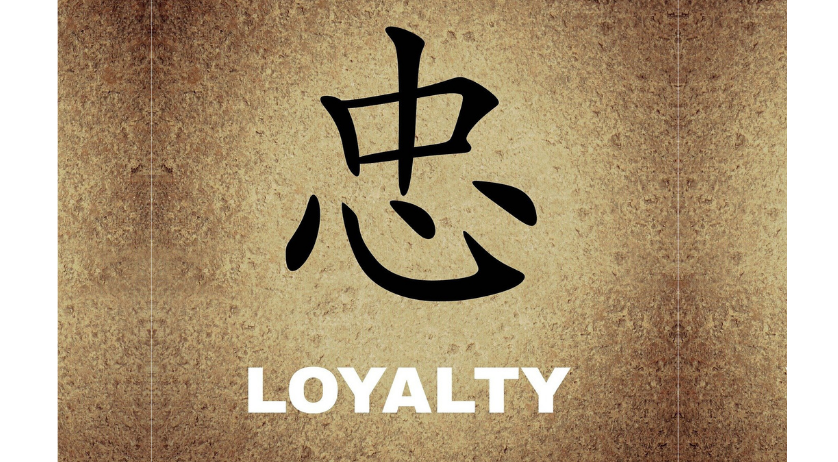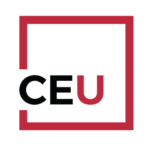There can be no doubt that today’s buyers have evolved into sophisticated decision-makers who demand more than just quality products to achieve consumer loyalty.
As we navigate through 2025, the consumer landscape continues to shift at an unprecedented pace, challenging CPG brands to move beyond reactive strategies and embrace a truly consumer-centric approach.
With 86% of consumers now citing exceptional experience as their primary purchasing driver (McKinsey), brands must fundamentally rethink their engagement strategies to stay relevant. Yet many mid-sized CPG companies remain trapped in a cycle of reaction—constantly trying to catch up to consumer expectations rather than anticipating and shaping them.
This article explores the critical values driving today’s consumer loyalty and offers actionable strategies with recent, real-world examples to help your brand lead the market in 2025 and beyond.
If you would rather listen than read: 
The 2025 Consumer Profile: Evolution of Values and Expectations
Each of these core values has intensified in importance, representing powerful opportunities to build lasting loyalty when addressed strategically.
1. Experience as the Ultimate Differentiator
The product-experience balance has definitively tipped, with memorable experiences now overshadowing product attributes in consumer decision-making. Recent research shows that 79% of consumers have abandoned brands after disappointing experiences despite satisfaction with the actual products (Forrester).
Oatly’s Immersive Retail Concept: Oatly launched experiential pop-up stores in major urban centers that combine product sampling with interactive digital installations showcasing the climate impact of plant-based choices. These spaces feature augmented reality elements allowing consumers to visualize their personal environmental impact when choosing plant-based alternatives. This multisensory approach has driven a 42% increase in brand advocacy among first-time visitors.
PepsiCo’s Personalized Flavor Lab: PepsiCo introduced a direct-to-consumer platform where customers can create custom flavor profiles for beverages and snacks based on their taste preferences and nutritional goals. These personalized products are delivered in subscription packages with content tailored to individual lifestyle interests. The initiative has secured an impressive 78% subscription renewal rate in its first year.
Proven Strategy: To win in today’s market, prioritize experience mapping across the entire consumer journey. Identify friction points and emotional opportunities at each touchpoint, then redesign these moments to create memorable, shareable experiences that transcend the product itself.
2. Radical Transparency as Table Stakes
Transparency has evolved from a differentiator to a fundamental expectation, with 92% of consumers now actively seeking information about ingredient sourcing, manufacturing practices, and corporate values before making purchases (Edelman Trust Barometer). The era of opaque business practices is firmly behind us.
Seventh Generation’s “Ingredient Stories” Initiative : Moving beyond simple ingredient lists, Seventh Generation launched digital passports for each product ingredient, allowing consumers to trace origins through blockchain verification and view environmental impact metrics in real-time. The traceable ingredients platform has driven a 34% increase in brand trust metrics among millennial and Gen Z consumers.
Impossible Foods’ Carbon Footprint Calculator : Impossible Foods integrated a dynamic carbon footprint calculator into its packaging using QR technology. Consumers can scan products to view precise environmental impact data, including water usage, land conservation metrics, and emissions reduction compared to animal-based alternatives. This initiative has contributed to a 28% increase in repeat purchases among environmentally conscious consumers.
Proven Strategy: Implement supply chain visibility programs that make your sourcing and production processes transparent to consumers. Consider partnerships with blockchain verification platforms to validate claims and build credibility through third-party verification rather than self-reporting.
3. Hyper-Personalization Through Predictive Analytics
The personalization bar continues to rise, with 83% of consumers now expecting brands to not only understand their preferences but anticipate their needs before they articulate them (Accenture). Generic approaches to personalization are increasingly perceived as outdated.
Coca-Cola’s Predictive Flavor Platform : Coca-Cola’s AI-powered recommendation engine analyzes multiple data points—including weather patterns, local events, and individual consumption habits—to suggest optimal beverage choices through their mobile app. The system learns from consumer feedback to continuously refine its suggestions, achieving a remarkable 67% prediction accuracy within six months of launch.
Unilever’s “Mood-Matched” Product System : Unilever deployed an opt-in system that integrates with consumer wearable devices to recommend personal care products based on biological markers, sleep patterns, and stress levels. This innovative approach to contextual personalization has resulted in a 38% increase in consumer engagement and a 24% lift in cross-category purchases.
Proven Strategy: Develop personalization capabilities that evolve from reactive to predictive by integrating diverse data sources with advanced analytics. Focus on creating recommendation engines that surprise and delight consumers by anticipating needs they haven’t yet recognized themselves.
4. Purpose-Driven Commerce and Measurable Impact
Environmental and social responsibility have evolved from brand attributes to fundamental business imperatives, with 88% of consumers expecting brands to demonstrate measurable progress toward sustainability goals (Nielsen IQ, 2024). Vague commitments have given way to verified results.
Patagonia’s Regenerative Agriculture Program : Patagonia expanded its regenerative agriculture initiative to include mid-sized farming operations in its supply chain, offering financial incentives and technical support for carbon sequestration practices. The program now quantifies environmental benefits through satellite imagery and soil sampling, with results verified by third-party environmental auditors.
Lush’s “Carbon Positive by 2025” Initiative: Lush implemented a comprehensive carbon reduction strategy across its entire operation, investing in regenerative projects that sequester more carbon than the company produces. Through transparent reporting and verification, Lush has documented a 65% reduction in its carbon footprint since 2021, attracting environmentally conscious consumers who prioritize verified sustainability credentials.
Proven Strategy: Move beyond sustainability pledges to implement measurable impact programs with regular public reporting. Partner with certification bodies and environmental organizations to verify claims and provide consumers with confidence in your environmental commitments.
Is your Brand Persona Template in need of an upgrade? Check out C3Centricity’s popular 4W™ Template.
Actionable Implementation Guide for Mid-Sized CPG Companies in 2025
Understanding consumer values provides the foundation, but strategic execution determines success. Here are practical approaches calibrated specifically for mid-sized CPG companies, with implementation examples you can adapt to your organization:
1. Leverage AI-Powered Consumer Intelligence
Implementation Example: Create a cross-functional “Consumer Signals Team” that meets weekly to analyze AI-generated insights from social listening platforms like Brandwatch or Synthesio. Establish a scoring system to evaluate emerging trends, with clear thresholds for when to move from monitoring to active product development.
Resource Allocation Guide: For companies with annual revenue between $50-250 million, allocate 2-3% of your marketing budget to consumer intelligence tools. Begin with a focused analysis of your top-performing product category before expanding.
Success Metrics: Track your “trend anticipation rate” by documenting identified trends and measuring how many materialize into market movements within 6-12 months. Aim for 30% improvement in trend identification speed during your first year.
2. Adopt Agile Product Development Methodologies
Implementation Example: Structure development into 30-60-90 day sprints with clearly defined success criteria at each milestone. Create a designated “innovation pod” of 5-7 cross-functional team members empowered to make rapid decisions without extensive approval chains.
Practical Starting Point: Begin with a single product line extension rather than an entirely new offering. Document your current development timeline and identify specific checkpoints where approval bottlenecks occur. Replace traditional stage-gate reviews with continuous feedback loops that include both technical and consumer input.
Success Metrics: Measure reduction in development timeline, percentage of concepts that reach market, and first-year performance against projections. The goal should be to double your concept-to-shelf speed while maintaining or improving success rates.
3. Democratize Innovation Through Consumer Co-Creation
Implementation Example: Launch a tiered engagement program that progressively deepens consumer involvement. Begin with digital surveys and feedback forums, then graduate interested participants to virtual focus groups and finally to your core co-creation panel. Provide meaningful incentives that go beyond financial compensation—such as early product access, behind-the-scenes insights, and recognition opportunities.
Technology Implementation Path: Start with existing platforms like CMNTY or IdeaScale before investing in proprietary solutions. Establish a clear governance model for IP protection and idea evaluation criteria.
Success Metrics: Track engagement rates, idea quality scores, implementation rate of consumer suggestions, and the performance differential between co-created and traditionally developed products.
4. Implement Precision Marketing Through Contextual Targeting
Implementation Example: Begin with email segmentation based on three key variables (purchase history, browsing behavior, and stated preferences), then expand to more sophisticated models that incorporate seasonal patterns and category-specific triggers. Create modular content blocks that can be dynamically assembled based on individual consumer profiles.
Capability Building Approach: Develop a “digital marketing maturity model” specific to your organization with clear milestones from basic segmentation to fully personalized experiences. Invest in upskilling your existing marketing team through specialized training programs focused on data utilization and content personalization.
Success Metrics: Measure improvements in engagement rates, conversion metrics, and customer lifetime value across different segments. The most important early indicator is reduction in message frequency coupled with improved response rates.
Check out our latest Book on Winning Secrets to Successful Innovation:
The Competitive Edge: From Insight to Foresight
The most significant shift for successful CPG brands in 2025 is the evolution from data-driven insight to predictive foresight. Leading companies now use advanced analytical models to anticipate consumer needs 12-18 months before they materialize, creating substantial first-mover advantages.
This capability, once exclusive to industry giants, has democratized through accessible AI platforms and collaborative data ecosystems. Mid-sized CPG companies that embrace these tools can operate with the agility of startups while leveraging the consumer understanding traditionally associated with much larger organizations.
Conclusion: The Path Forward
Today’s consumers expect brands to serve as partners in their personal journey, not just providers of products. By focusing on experience excellence, transparent practices, predictive personalization, and verified sustainability impact, your brand can build the trust and loyalty essential for long-term success.
The gaps between consumer expectations and brand delivery represent significant opportunities for mid-sized CPG companies willing to embrace a proactive, values-aligned approach. Those who successfully bridge these gaps will not only secure market share but help define industry standards for the coming decade.
















